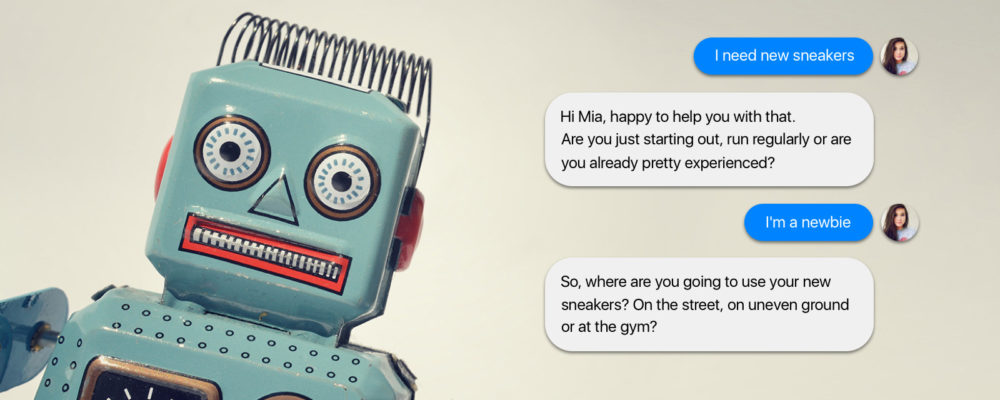
A must-have solution for any useless and overrated customer service or gadget, everyone has their own opinion on these famous chatbots that are increasingly populating the relationship between brands and consumers.
In terms of online sales, it is nevertheless a tool that may not be so quickly devalued
A tribune of Nicolas Finet , co-founder of Sortlist France
Competition is fierce in the world of e-commerce! So that to stand out from others, it is essential to keep abreast of the smallest news. This may seem difficult because e-commerce is constantly evolving …
One of the biggest changes he has experienced is the arrival of chatbots.
And, although chatbots have been around for some time, they continue to influence e-commerce.
Let’s take stock of this alliance that can lead to a better customer experience …
What is a chatbot? How does it work ?
Before going further, it would be interesting to define beforehand a chatbot. To put it simply, it’s a program that interacts directly with visitors to an e-commerce site.
Indeed, a chatbot is able to have a chat via an email application with a human interlocutor. Even better, he can answer questions, handle special requests, and so on.
As you will have understood, to fulfill the tasks it is responsible for, a chatbot must have an artificial intelligence or AI.
In addition, it allows him to analyze and interpret the questions of a potential customer.
As the discussion continues, the bot learns and delivers more and more precise answers . It can also guide a visitor based on the decision tree that has been integrated. His (pre-recorded) answers will then be based on the visitor’s questions.
It is actually the AI that provides chatbots with a considerable amount of data to exploit. Goal ? Understand specific concepts such as product names and images, provide relevant answers as well as make comparisons and recommendations.
It goes without saying that to be and remain effective, the chatbots algorithm needs to be continually fed with a lot of information.
Investing in an automatic learning infrastructure means moving out of static data territory towards constant refinement and tuning.
Why use a chatbot for its e-commerce site?
As an e-commerce site manager, you have no doubt realized that it is difficult to answer all of your visitors’ questions.
Most of the time, an answer is given to them in several hours, whereas they expect to have it in real time.
This is one of the first points where a chatbot can help you.
Indeed, a potential customer can initiate a conversation with a bot at any time of the day or night and instantly get an answer to his questions.
In addition, as a computer program, a chatbot can process multiple requests at the same time.
Moreover, with their AI using the Processing Natural Language (English, Natural Language Processing), the chatbot are able to identify the typography of a visitor.
This added to the use of crm data, the bot is able to customize its responses so that the discussion is quite similar to that which one would have with a human being.
The benefits a chatbot can bring do not stop there.
He can also identify the requirements of each client . This is done by accessing the history of a prospect / customer in particular when it visits your site.
After analysis, the chatbot is able to suggest products he is likely to like and buy.
A bot can fulfill the same role as a store salesperson, while providing personalized suggestions. Which, in itself, can boost not only your sales, but also saves time for your customers AND yourself.
You should also know that a chatbot can do more than interact with customers and visitors to your online store. They can be programmed to track your inventory and thus inform you when you are approaching the out of stock of an item.
In the same way, they can be programmed to inform customers that a product they are looking for is back in stock.
The limits of chatbots
Although chatbots help to greatly improve the customer experience, they are not immune to certain restrictions.
Indeed, it is likely that a user asks unidentified questions. As a result, the chatbot will be unable to provide an appropriate response.
Another limitation is the inability to empathize . This is why some users do not like to chat with chatbots .
The solution is fortunately simple: keep a human agent ready to intervene.
Nevertheless, smart bots can unload certain departments such as customer service from basic questions. This gives the service time to focus on the problems of customers that chatbots have not been able to solve.
That to say that despite their AI, bots can not replace humans. Indeed, they still need the presence of the human to be maintained.
Conclusion
A chatbot lends a hand to a merchant site on many levels. In addition, it facilitates communication with the customer, handles routine and repetitive tasks, offers visitors assistance and recommends products to generate sales.
In short, it improves the customer experience on online shops. So the difference with a physical store is almost not felt.
Chatbots are a real revolution for the world of e-commerce by acting and giving information faster than a human being.
At the moment, chatbots are far from perfect, but it is possible that in the near future, they will be able to fill their own gaps. And thus become even more indispensable for the development of e-commerce!

Comments are closed.